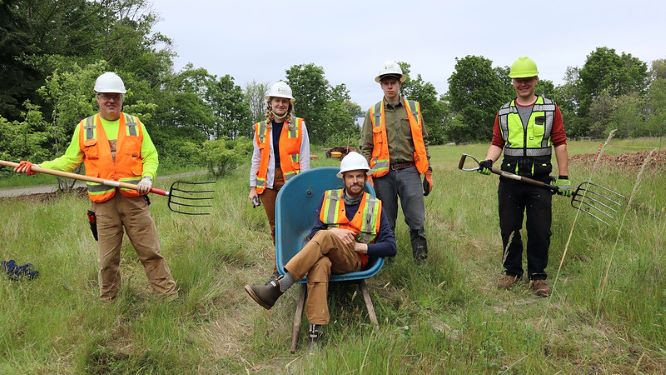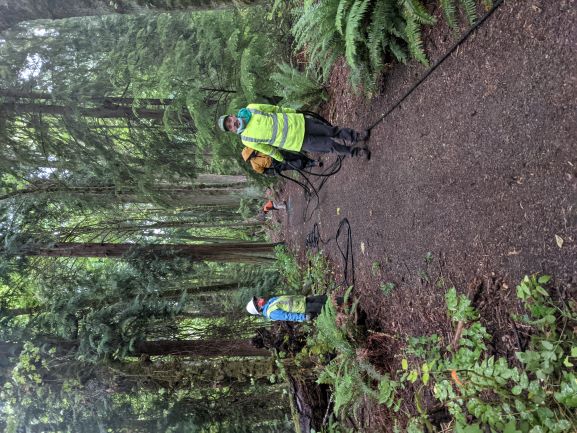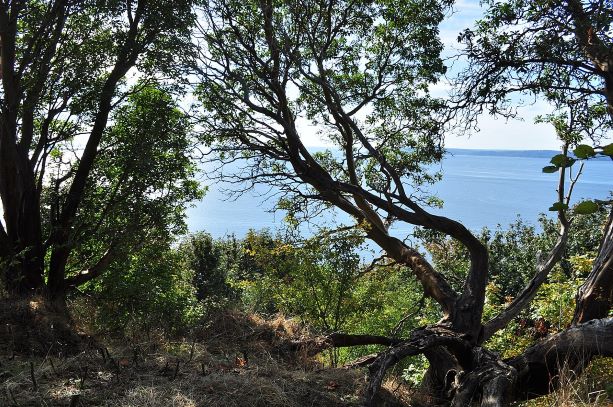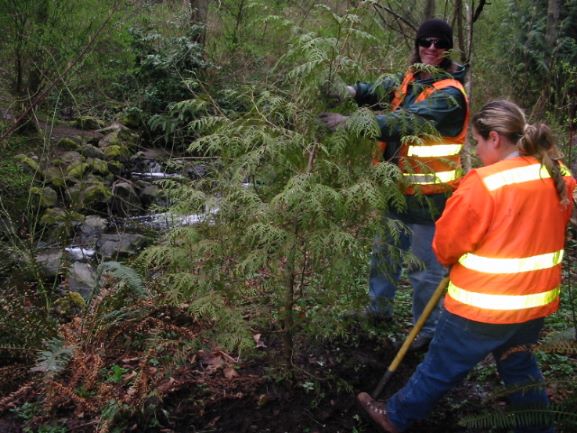
GSP is fortunate to have public funding and grants to support restoration crew work citywide. The sites where crews work is not always visible or easily accessible, so this post provides some insight on where to see these talented professionals in action. Crews are active in the “wilder” parts of Seattle’s forested natural areas in places like the East and West Duwamish Greenbelts, the bluffs facing Puget Sound at Discovery Park and the steep ravines of Lakeridge Park’s Deadhorse Canyon. We are also actively working in smaller parks where the terrain is too steep or wet for others to effectively work or in areas where there isn’t a significant community stewardship presence.
sťu̓ʔəlpu̓kʷəb (Herring’s House Hill) in the West Duwamish Greenbelt

Early in 2020, Seattle Parks and Recreation acquired 4-acres of forest to the West Duwamish Greenbelt. Located close to Puget Park and down the hill from Pigeon Point Park, the forest provides a potential “missing link” in a Ridge to River Trail route currently in the initial stages of planning by the Duwamish Tribe. GSP refers to this zone as sťu̓ʔəlpu̓kʷəb (or Herring’s House Hill) due to its proximity to the former Duwamish village site of Herring’s House on the Duwamish River. King County Healthy Lands Program (HeLP) stepped up to support the early phases of restoration by funding crew work on the steep slopes. The crew Garden Cycles will be active removing weeds this summer into fall. Planting may begin as early as the 2021/2022 season.
Taylor Creek in Lakeridge Park (AKA Deadhorse Canyon)

Seattle Public Utilities (SPU) is one of the original GSP partners. In fact, early restoration efforts supported by SPU (before GSP started) have been incorporated into the continuing citywide restoration efforts AND many are now in long-term restoration and maintenance. Taylor Creek runs through southeast Seattle’s Lakeridge Park, one of those fish-bearing streams that has seen significant City investment and the focus of a new project from Lake Washington upstream into the Taylor Creek headwaters.
Crews are active in some of the steepest terrain in the city right now in an effort to stabilize the slopes by removing weeds from the ravine “wall” to preserve mature trees and native vegetation. Crews will subsequently revegetate with a diverse array of native trees, shrubs, and seed in the 2021-2022 season. The photo shows Signature Landscapes out working.
Daybreak Star

In 1970, Indigenous activists who protested the transfer of Fort Lawton to the City of Seattle were successful in their goal of establishing an urban Indian cultural center now known as Daybreak Star.
Momentum has been building for cultural and ecological restoration focused on the 20-acre forest and waters surrounding the Indian Cultural Center.
GSP is supporting United Indians of All Tribes on priority projects such as restoration of the ponds that flow from the North Forest of Discovery Park towards Puget Sound.
We are actively working to center Indigenous peoples in the restoration of the ponds and surrounding forest, which also includes harvest and foraging of medicine, food and fiber from the forest, streams and ponds. In practice, foraging as part of a demonstration and/or limited activity in association with a City of Seattle program or partnership is allowed. Examples on City lands: Department of Neighborhoods P-Patch Gardens, Seattle Parks and Recreation Urban Food Systems gardens and orchards, City Fruit programming, Rainier Beach Urban Farm and Wetland, Marra-Desimone Park (Marra Farm), Alleycat Acres, and the Beacon Food Forest.
Lake City Floodplain

An exciting new floodplain project is happening in Lake City by 125th St. Future construction will help to improve water quality, slow down stormwaters and provide access to north Seattle’s Thornton Creek. GSP got a head start with generous support from King County Noxious Weeds Program through the Healthy Lands Project in April 2021. Weed control is underway on the steeper slope and around the former home site. Crews and volunteers will eventually replant with a diversity of native trees and shrubs in these areas now dominated by just a few species of weeds.
Our Professional Crews are essential to the success and future of the Green Seattle Partnership. Thanks to all of our crew members who make these amazing projects happen!

I would like to thank the crews working along Lake Washington Boulevard restoring the shoreline this winter and spring. They were out in bad weather doing the hard work removing blackberries. Most of the new seedlings they planted and mulched are doing well! We appreciate your efforts!
Some comments: It looks like the beaver have taken out the larger cedar seedlings that were planted close to shore. Now that the brush has been removed they can graze farther up the bank. Also, they are taking down some of the small maple trees between Alaska and Angeline streets.
Thanks again!